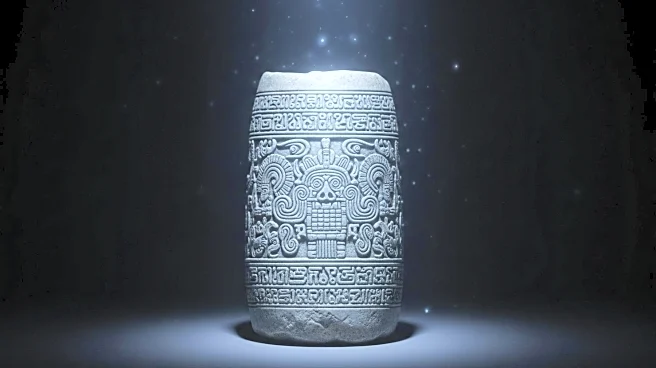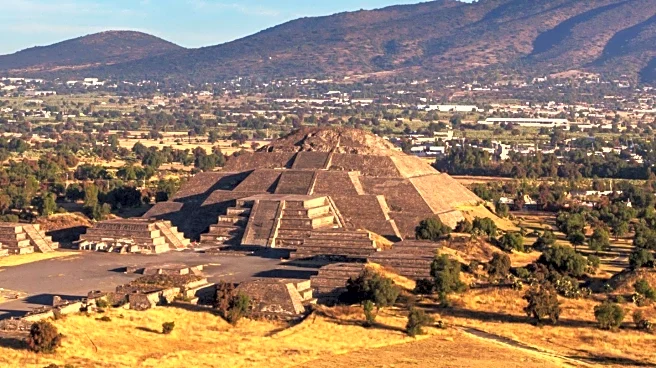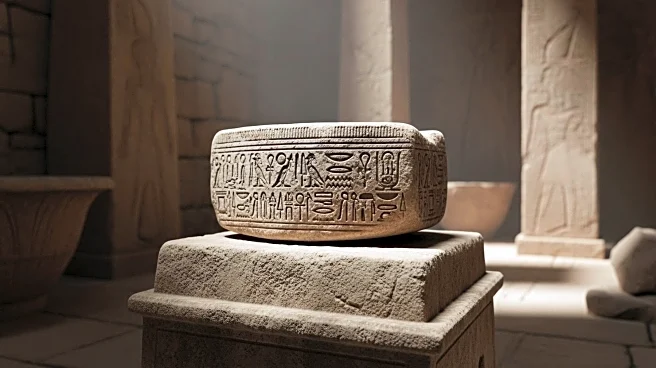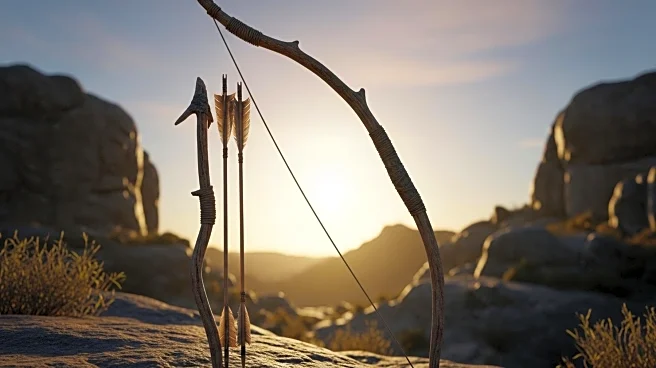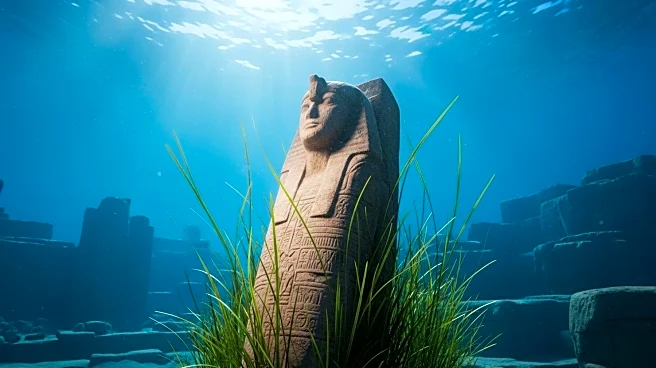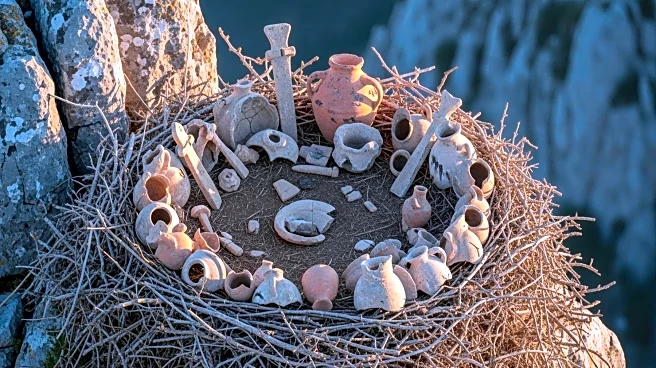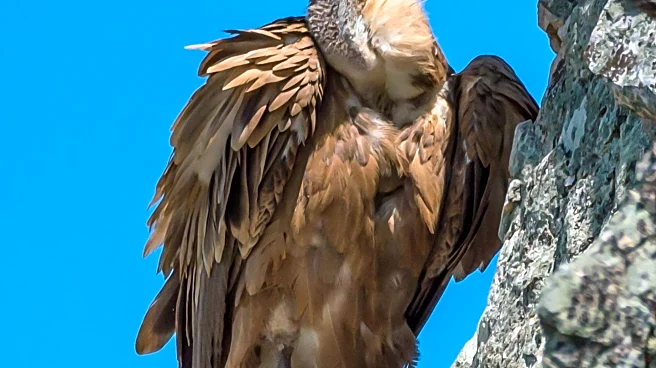What's Happening?
Archaeologists have uncovered what is believed to be the oldest known human-made structure in the Theopetra cave in Thessaly, Greece. This stone wall, dating back approximately 23,000 years, predates the Great Pyramid of Khufu by nearly three times. The Theopetra cave, formed during the Cretaceous period, has been a site of continuous human habitation since the Middle Paleolithic era. Systematic excavations led by Dr. Catherine Kyparissi-Apostolika since 1987 have revealed a wealth of artifacts, including stone tools, shell jewelry, and children's footprints, indicating the cave's role as a prehistoric sanctuary. The wall, constructed around 21,000 BCE, served as climate protection during the last glacial maximum, showcasing early human engineering skills.
Why It's Important?
This discovery challenges traditional narratives about the timeline of human architectural capabilities, suggesting that sophisticated construction techniques were employed long before the rise of recognized ancient civilizations. The Theopetra wall's construction during a period of extreme climatic conditions highlights early humans' adaptability and problem-solving skills. This finding not only enriches our understanding of prehistoric human life but also underscores the importance of preserving archaeological sites for future research. The insights gained from Theopetra contribute to a broader understanding of human evolution and technological advancement, offering a glimpse into the ingenuity of our ancestors.
What's Next?
The Theopetra cave has been closed to public access to protect its fragile archaeological treasures. Ongoing excavations continue to reveal new information about early European populations, their burial customs, dietary practices, and technological innovations. International archaeological teams remain actively engaged in research at the site, aiming to uncover further details about human adaptation and survival strategies during prehistoric times. The findings from Theopetra are expected to influence future studies on human evolution and the development of early architectural techniques.
Beyond the Headlines
The discovery of the Theopetra wall not only provides insights into ancient human life but also raises questions about the preservation of archaeological sites in the face of modern development. The site's closure to the public highlights the delicate balance between research and conservation. Additionally, the findings challenge the perception of prehistoric humans as primitive, instead portraying them as innovative problem-solvers capable of complex construction projects. This shift in understanding may influence how future archaeological discoveries are interpreted and valued.

